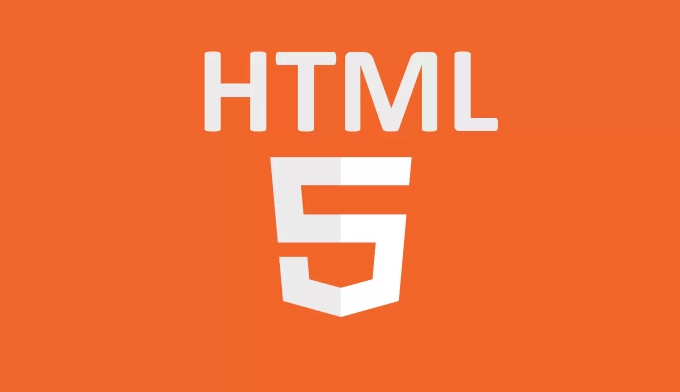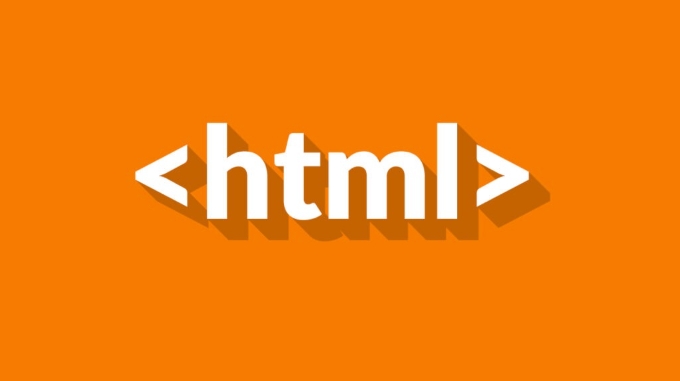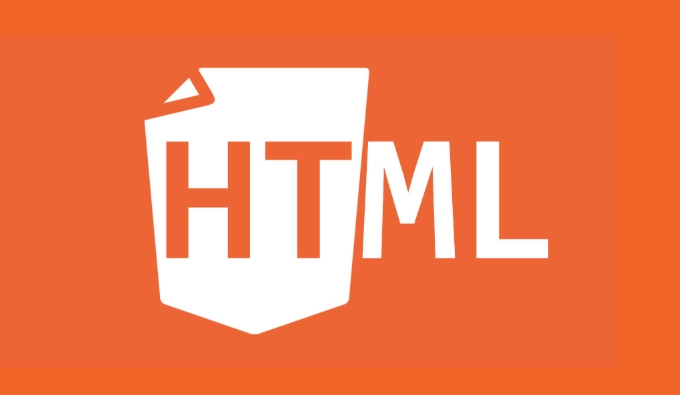What are the essential HTML elements for structuring a webpage?
Jul 03, 2025 am 02:34 AMThe web page structure needs to be supported by core HTML elements. 1. The overall structure of the page is composed of ,
, and , where is the root element, stores meta information, and displays the content; 2. Content organization relies on titles (-), paragraphs (
) and block tags (such as

The structure of a web page is like the foundation of a house, and the HTML element is the bricks and tiles in this foundation. There are several core HTML elements that are essential for web pages to be clear, easy to read, and convenient for maintenance and SEO.

Overall structure of the page:
These three are the basic skeletons of each standard web page:
 <ul>
<ul>
<title></title> ), character encoding ( <meta charset="UTF-8"> ), style link ( <link> ), etc. These contents will not be displayed directly on the page.Without these tags, the browser can render pages, but it is prone to errors and does not comply with the specifications.
Content organization: title, paragraph and block
To make the content more organized, the following elements are very critical:
 <ul>
<ul>
<h1></h1> to <h6></h6> to represent titles at different levels. <h1></h1> The most important thing is that it usually represents the main title of the page, and a page is recommended to appear only once.<p></p> , and each paragraph should be wrapped in <p></p> , rather than segmented by newlines or multiple spaces.<div> or more semantic tags such as <code><section></section> , <article></article> , <header></header> , <footer></footer> , etc. These tags not only help layout, but also help search engines understand content structure.For example:
<article> <h2>Article Title</h2> <p>This is the first paragraph of the article. </p> </article>
Navigation and links: <nav> and <a>
The navigation bar is an important part of a website and is usually placed in the <nav> tag, which contains multiple links <a> .
<a href="#">首頁(yè)</a> to create a hyperlink.<nav> to improve accessibility and SEO results.Some common practices:
<ul><ul> list, so that the structure is clear and it is convenient for style control.aria-current="page" attribute to the link of the current page to improve the experience of assistive technology users.Form interaction: input and submit
If a web page requires user input, it is inseparable from the elements related to the form:
<ul><form> is the container for the form.<input> input box includes text box ( type="text" ), password box ( type="password" ), button ( type="submit" ), etc.<label> to improve accessibility, such as:<label for="username">Username:</label> <input type="text" id="username" name="username">
Don't forget to add the submit button , otherwise the user will not be able to send data.
Basically that's it. Although HTML is very basic, using the right structure can make the page clearer and easier to maintain, and also lay a good foundation for subsequent style and function development.
The above is the detailed content of What are the essential HTML elements for structuring a webpage?. For more information, please follow other related articles on the PHP Chinese website!

Hot AI Tools

Undress AI Tool
Undress images for free

Undresser.AI Undress
AI-powered app for creating realistic nude photos

AI Clothes Remover
Online AI tool for removing clothes from photos.

Clothoff.io
AI clothes remover

Video Face Swap
Swap faces in any video effortlessly with our completely free AI face swap tool!

Hot Article

Hot Tools

Notepad++7.3.1
Easy-to-use and free code editor

SublimeText3 Chinese version
Chinese version, very easy to use

Zend Studio 13.0.1
Powerful PHP integrated development environment

Dreamweaver CS6
Visual web development tools

SublimeText3 Mac version
God-level code editing software (SublimeText3)

Hot Topics
 How do I stay up-to-date with the latest HTML standards and best practices?
Jun 20, 2025 am 08:33 AM
How do I stay up-to-date with the latest HTML standards and best practices?
Jun 20, 2025 am 08:33 AM
The key to keep up with HTML standards and best practices is to do it intentionally rather than follow it blindly. First, follow the summary or update logs of official sources such as WHATWG and W3C, understand new tags (such as) and attributes, and use them as references to solve difficult problems; second, subscribe to trusted web development newsletters and blogs, spend 10-15 minutes a week to browse updates, focus on actual use cases rather than just collecting articles; second, use developer tools and linters such as HTMLHint to optimize the code structure through instant feedback; finally, interact with the developer community, share experiences and learn other people's practical skills, so as to continuously improve HTML skills.
 How do I embed PHP code in an HTML file?
Jun 22, 2025 am 01:00 AM
How do I embed PHP code in an HTML file?
Jun 22, 2025 am 01:00 AM
You can embed PHP code into HTML files, but make sure that the file has an extension of .php so that the server can parse it correctly. Use standard tags to wrap PHP code, insert dynamic content anywhere in HTML. In addition, you can switch PHP and HTML multiple times in the same file to realize dynamic functions such as conditional rendering. Be sure to pay attention to the server configuration and syntax correctness to avoid problems caused by short labels, quotation mark errors or omitted end labels.
 How do I embed video in HTML using the element?
Jun 20, 2025 am 10:09 AM
How do I embed video in HTML using the element?
Jun 20, 2025 am 10:09 AM
To embed videos in HTML, use tags and specify the video source and attributes. 1. Use src attributes or elements to define the video path and format; 2. Add basic attributes such as controls, width, height; 3. To be compatible with different browsers, you can list MP4, WebM, Ogg and other formats; 4. Use controls, autoplay, muted, loop, preload and other attributes to control the playback behavior; 5. Use CSS to realize responsive layout to ensure that it is adapted to different screens. Correct combination of structure and attributes can ensure good display and functional support of the video.
 How do I minimize the size of HTML files?
Jun 24, 2025 am 12:53 AM
How do I minimize the size of HTML files?
Jun 24, 2025 am 12:53 AM
To reduce the size of HTML files, you need to clean up redundant code, compress content, and optimize structure. 1. Delete unused tags, comments and extra blanks to reduce volume; 2. Move inline CSS and JavaScript to external files and merge multiple scripts or style blocks; 3. Simplify label syntax without affecting parsing, such as omitting optional closed tags or using short attributes; 4. After cleaning, enable server-side compression technologies such as Gzip or Brotli to further reduce the transmission volume. These steps can significantly improve page loading performance without sacrificing functionality.
 How has HTML evolved over time, and what are the key milestones in its history?
Jun 24, 2025 am 12:54 AM
How has HTML evolved over time, and what are the key milestones in its history?
Jun 24, 2025 am 12:54 AM
HTMLhasevolvedsignificantlysinceitscreationtomeetthegrowingdemandsofwebdevelopersandusers.Initiallyasimplemarkuplanguageforsharingdocuments,ithasundergonemajorupdates,includingHTML2.0,whichintroducedforms;HTML3.x,whichaddedvisualenhancementsandlayout
 How do I use the element to represent the footer of a document or section?
Jun 25, 2025 am 12:57 AM
How do I use the element to represent the footer of a document or section?
Jun 25, 2025 am 12:57 AM
It is a semantic tag used in HTML5 to define the bottom of the page or content block, usually including copyright information, contact information or navigation links; it can be placed at the bottom of the page or nested in, etc. tags as the end of the block; when using it, you should pay attention to avoid repeated abuse and irrelevant content.
 What is the declaration, and what does it do?
Jun 24, 2025 am 12:57 AM
What is the declaration, and what does it do?
Jun 24, 2025 am 12:57 AM
Adeclarationisaformalstatementthatsomethingistrue,official,orrequired,usedtoclearlydefineorannounceanintent,fact,orrule.Itplaysakeyroleinprogrammingbydefiningvariablesandfunctions,inlegalcontextsbyreportingfactsunderoath,andindailylifebymakingintenti
 How do I use the tabindex attribute to control the tab order of elements?
Jun 24, 2025 am 12:56 AM
How do I use the tabindex attribute to control the tab order of elements?
Jun 24, 2025 am 12:56 AM
ThetabindexattributecontrolshowelementsreceivefocusviatheTabkey,withthreemainvalues:tabindex="0"addsanelementtothenaturaltaborder,tabindex="-1"allowsprogrammaticfocusonly,andtabindex="n"(positivenumber)setsacustomtabbing






